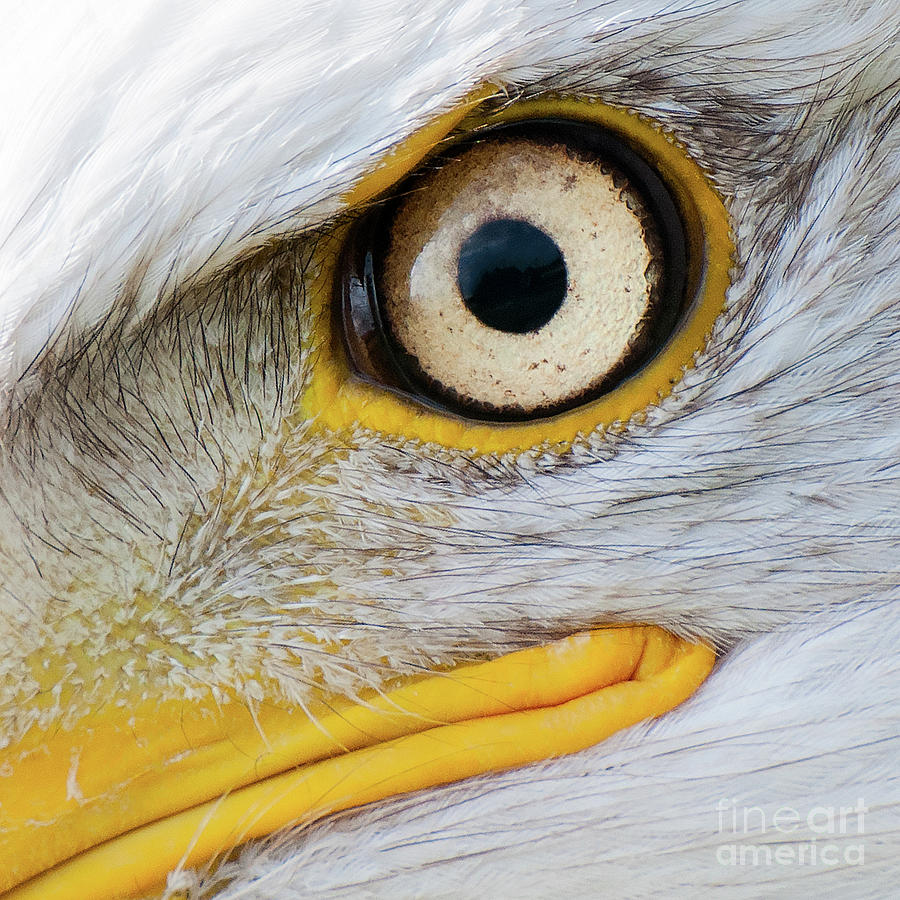
Eagle eyes divaapo
Abstract. The optical quality of a living eagle's eye was determined by an ophthalmoscopic method. The performance of the eye was substantially better than that reported for humans, but did not confirm some of the wilder claims made for such birds.
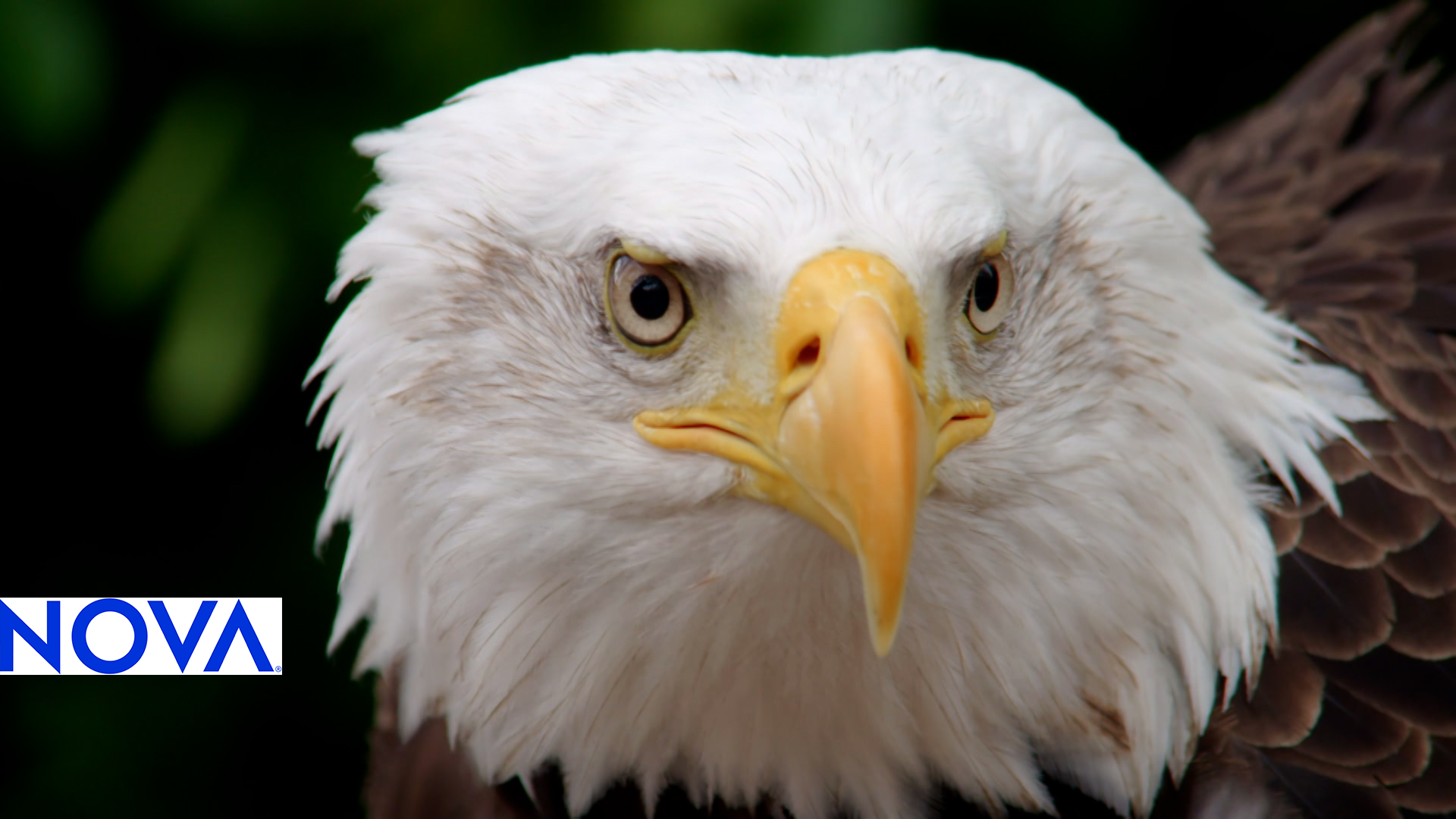
Eagle Eye Structure and Vision Eagle Power PBS LearningMedia
This Bald Eagle's eyes are about the same size as Tommy's. The eagle's head is smaller than Tommy's, but its eyes are just as big, or even a little bit bigger. Look again at the picture of a bird skull. Bird eyes are MUCH bigger relative to their head size than human eyes! And their brain is much smaller.

Journey North Bald Eagles
With forward-facing eyes, the bald eagle has a wide field of binocular vision.. Vision is the most important sense for birds, since good eyesight is essential for safe flight.Birds have a number of adaptations which give visual acuity superior to that of other vertebrate groups; a pigeon has been described as "two eyes with wings". Birds are theropod dinosaurs, and the avian eye resembles that.
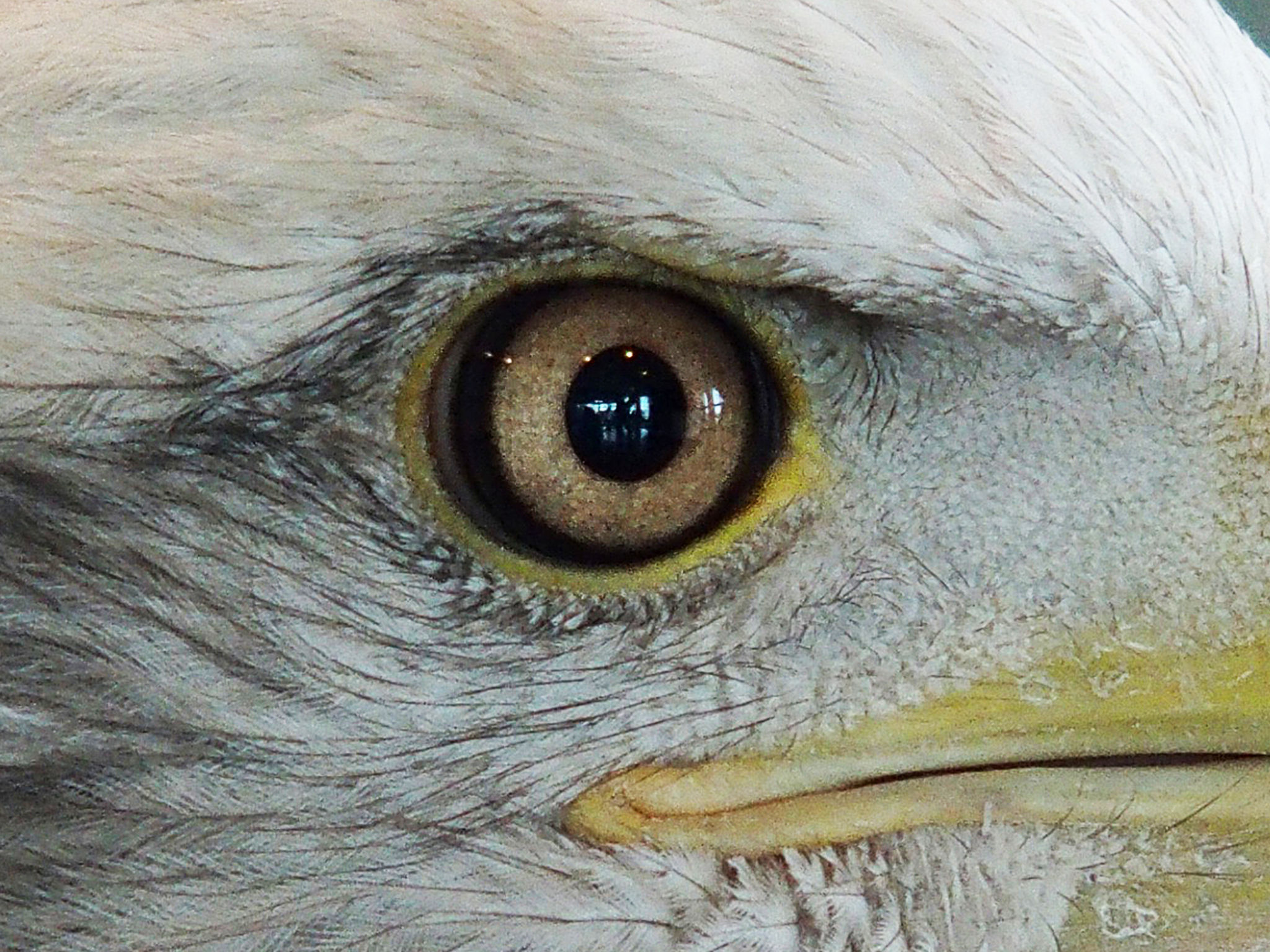
Seeing with Different Eyes Nature’s Depths
Microsoft Word - Document3. Eagles Eyes - The eyes of an eagle are exceptionally sharp. Eyes of an Eagle (Bald Eagle, Denali) An eagle's vision is exceptionally sharp because each eye has two foveae - areas of acute vision - as compared with the human eye which only has one. The cones in the eagle's fovea are very small and tightly grouped.
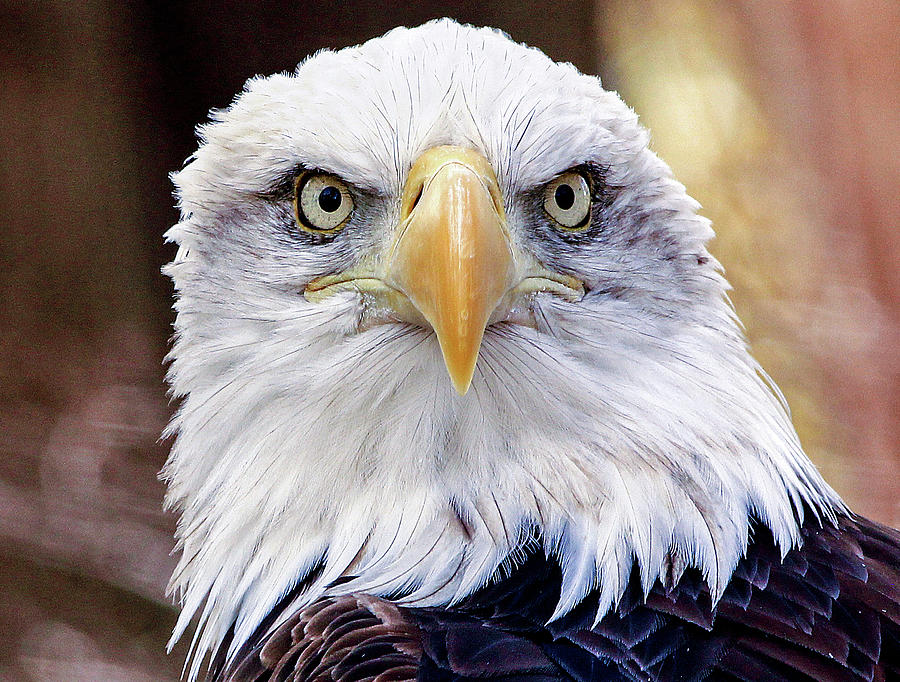
Eagle eyes quststealth
Rods in the eye register the overall shape of objects, while the cones register details, such as contour and color. The rods and cones in a raptor's eye may be five times more dense than those in a human eye. [Repeat call of Golden Eagle] The Golden Eagle soars on a seven-foot wingspan, riding thermals high into the air. From there, it can.
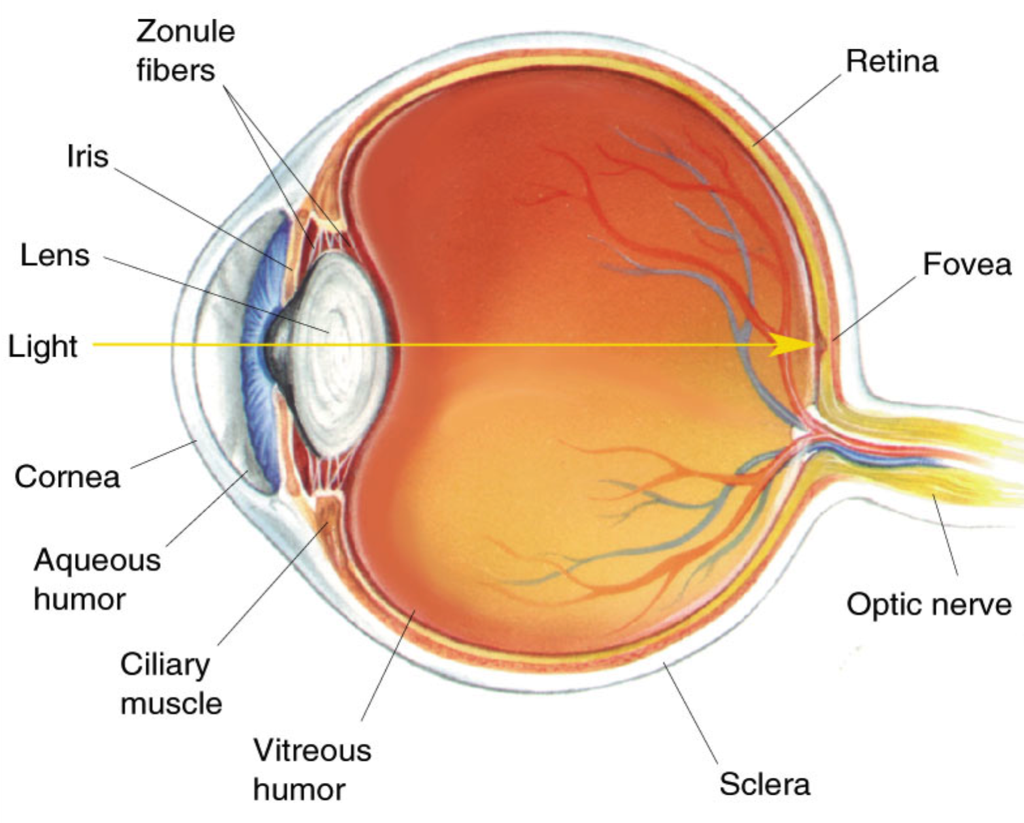
3D printed eagle eye from University of Stuttgart gives micromachines the power to see 3D
Moving on to the anatomy of an eagle's eye, we can further explore the intricacies of their vision. Anatomy of an Eagle's Eye. The intricate structure of an eagle's eye is a marvel of evolutionary adaptation. The eagle eye is relatively larger than the human eye, with a diameter of about 2.1 cm, and is yellow.

Bald Eagle Bird Watching Academy
The eagle's eye anatomy is specifically designed to enable it to hunt even the smallest prey from a great height. Eagle eye development begins at an early stage when the eye structure and function are optimized to suit their predatory lifestyle. The eagle's eye vision range is around 340 degrees, which is significantly wider than humans.

How Does An Eagle Eye Work Reverasite
Eagle eyes are on the sides of their heads for a reason. Our eyes are on the front of our head, giving us excellent binocular vision but poor peripheral vision. We need both eyes in order to see a complete three-dimensional image. An eagle's eyes are more to the sides of the head. Though not as lateral as other birds, their eyes are fixed and.

bird unit bald eagle anatomy with importantly of bald eagle anatomy Bald eagle, Eagle
The optical quality of a living eagle's eye was determined by an ophthalmoscopic method. The performance of the eye was substantially better than that reported for humans, but did not confirm some of the wilder claims made for such birds.. Eye / anatomy & histology Humans Ophthalmoscopy Physiology, Comparative Retina / physiology Visual.

Eagles What if humans had eagle vision
The eagles' eye has a much deeper macula with even more densely packed cones than ours. Some of these are even sensitive to wavelengths we cannot perceive (infrared and ultraviolet). So as much as we would all like to have "Eagle Vision" the differences in the anatomy of our eyes makes that unlikely, even with such advanced new technology as.

Human Eye vs Eagle Eye Human eye diagram, Human eye, Eye anatomy diagram
The eagle can probably identify a rabbit moving almost a mile away. That means that an eagle flying at an altitude of 1000 feet over open country could spot prey over an area of almost 3 square miles from a fixed position. A Bald Eagle's eye changes color as it reaches maturity. Nestling eagles' eyes are nearly black.

eagle eye closeup in 2021 Eye close up, Animal close up, Eagle eye
It is obvious to want vision like an eagle but the characteristics and dimensions of human eye's lens, cornea, iris, retina etc. limits our visual acuity. The best vision we can achieve is 20/10 or even 20/8. LASIK can help you in getting 20/20 vision even if you have poor vision, but achieving the visual acuity of an eagle is next to impossible.
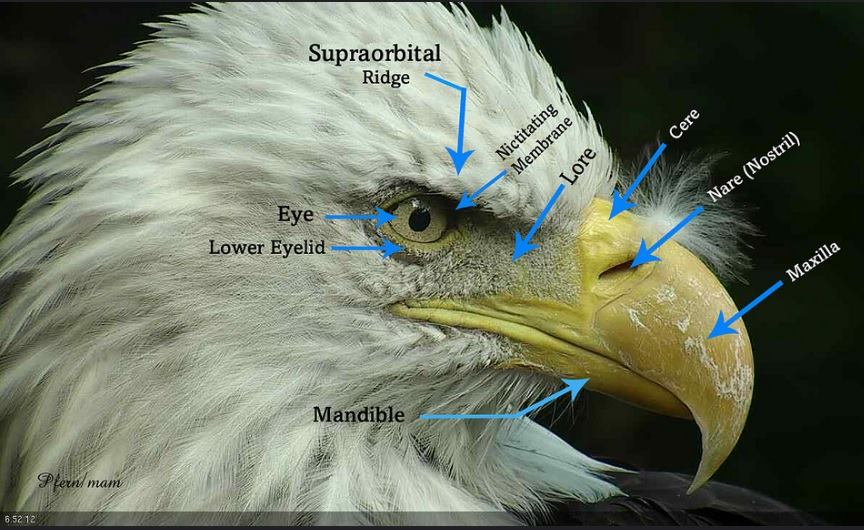
Bald Eagle Biology American Eagle Foundation
This Bald Eagle's eyes are about the same size as Tommy's. The eagle's head is smaller than Tommy's, but its eyes are just as big, or even a little bit bigger. Look again at the picture of a bird skull. Bird eyes are MUCH bigger relative to their head size than human eyes! And their brain is much smaller.

An example of the anatomy of an avian eye. [From Whittow (60) with... Download Scientific Diagram
The anatomy of an eagle's eyes is a remarkable example of adaptation for exceptional vision. Eagles have evolved specialized eye structures that allow them to see with incredible clarity and precision. Here are some key features of an eagle's eye anatomy: Large Eye Size: Eagles have relatively large eyes in proportion to their head size.
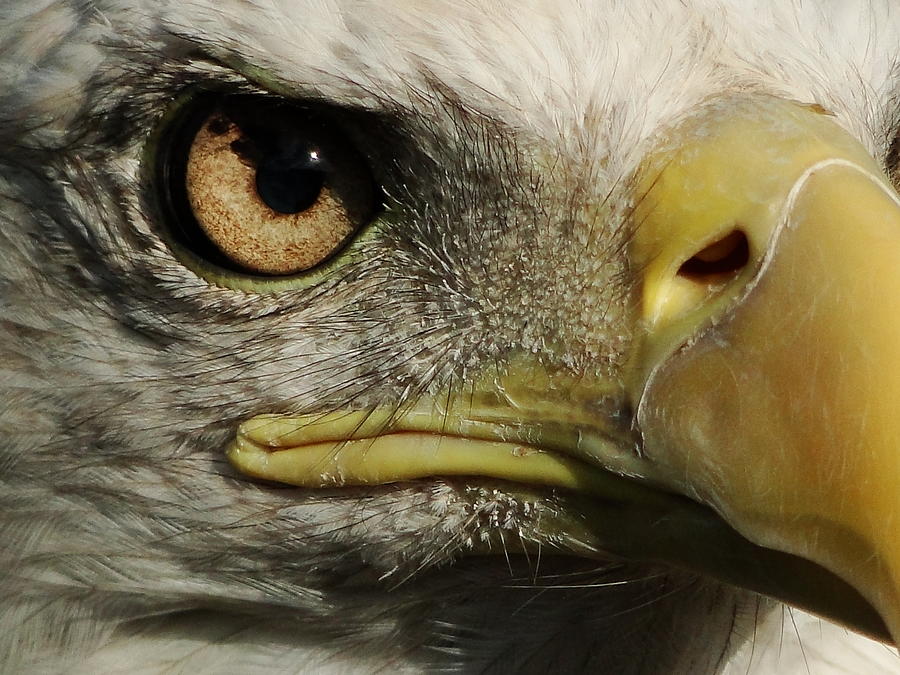
The eagle eye telfas
An eagle's eye has two focal points, or fovea, one pointed forward and the other to the side. Eagle eyes are huge; the eyes of a 10-pound (4.5-kg) eagle may be as large as those of a human weighing 200 pounds (90.7 kg).. According to the anatomy of the foveae, the deep fovea (nasal fovea) has the highest acuity, especially useful for.
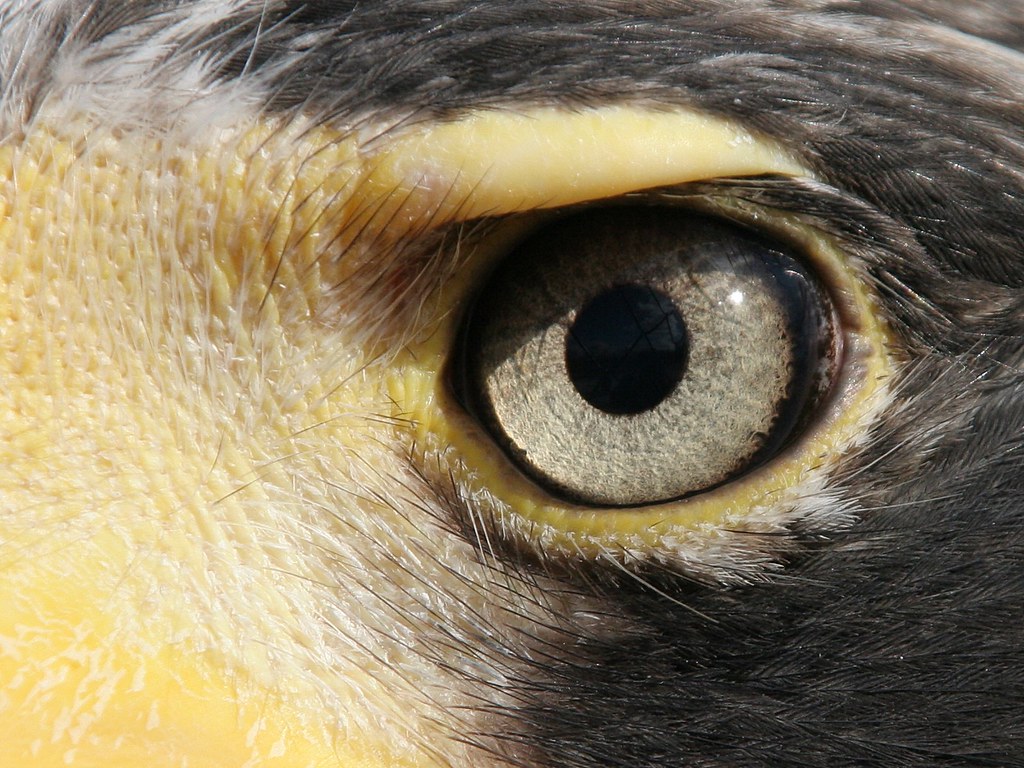
Eagle Eye a photo on Flickriver
Both have cornea, iris, retina, pupil, lens, optic nerve and most basic structures. However the eagle has a pecten while human eyes don't have that. There are also slightly different functions for the cornea. The Retina contains two different photoreceptors; rods and cones. Rods are more sensitive than cones and therefore are usually used when.